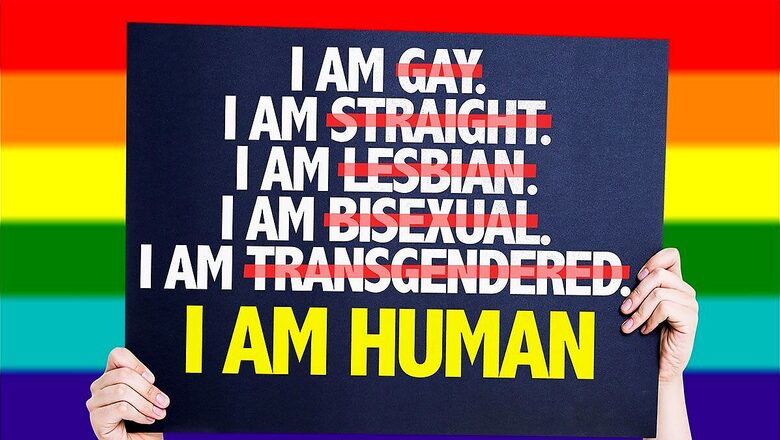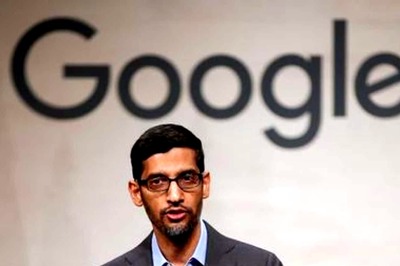
views
Public restrooms serve as a basic necessity for all. Nonetheless, for numerous individuals within the LGBTQ+ community, these spaces can morph into scary, dangerous places at the drop of a hat. All it takes is the wrong person, in the wrong place, at the wrong time.
You see, transgender and non-binary people don’t see themselves as male or female. They don’t fit into the binary mold that public toilets come in. Public restrooms have historically been structured around the binary notion of gender, inherently ignoring the kaleidoscope of gender identities encompassing transgender, non-binary, genderqueer, intersex, and gender non-conforming individuals.
A transgender person is someone who identifies with a gender different from the one assigned to them at birth. Non-binary persons, on the other hand, don’t strictly identify as male or female. So, irrespective of whether they go to the women’s toilet or the men’s… they are in the ‘wrong’ toilet. Being in the ‘wrong’ toilet opens them up to all manner of humiliation, abuse and sometimes, even violence.
Transgender, intersex, and non-binary individuals often face common experiences in gendered bathrooms. These experiences occur regularly and can include:
- Transgender women, particularly those whose physique is identifiably male, may be unjustly labeled as impostors or predators and coerced into utilizing the men’s toilet or vacating the premises (the women’s toilet).
- Transgender women, when forced to use the men’s toilet, do so with enormous trepidation, for fear of being attacked by transphobic men. The attack doesn’t have to be physical for it to be traumatizing. Ask anyone whose bully abused them verbally and emotionally.
- Transgender men might be perceived as interlopers by men, facing verbal or physical confrontation in the men’s restroom.
- Non-binary individuals may find themselves estranged from the gendered options, resorting to using disabled restrooms or refraining from using the facilities altogether.
- Intersex individuals may be subjected to uncomfortable, probing questions and scrutiny regarding their physical attributes and/or medical history.
- Gender non-conforming individuals may be derided, misgendered or attacked based on their attire or appearance.
For a moment, put yourself in the shoes of a transgender, intersex or non-binary person. Ask yourself: would you even go to the toilet? Or would you rather not eat or drink anything, even if it is all day at the office, so you can go to the toilet in peace, at home? The answer is obvious, isn’t it?
Now think about how that would affect you: mentally, emotionally and physically. A study conducted in the United States revealed that 59% of transgender or gender-diverse participants avoided using public toilets due to fear of confrontations. According to another study, among the transgender and/or nonbinary youth who experienced bathroom discrimination, 85% reported depressive mood and 60% seriously considered suicide. These experiences are echoed by transgender and non-binary people everywhere, including India.
There’s more. There are physical repercussions too. As we know, ‘holding it’ can lead to the development of urinary tract infections, kidney problems, and other related health complications. Since they’ll also restrict their intake of food and water, many of these individuals suffer from nutritional deficiencies and gastrointestinal issues. With our hot weather in India, dehydration is also never far behind.
Gendered bathrooms force transgender, intersex and non-binary individuals to play small in their social, academic and occupational spheres. Think about it – you’re distracted by your bladder, you’re spending a lot of energy each day trying to figure out when is the right time to take a bathroom break, you’re anxious. Are you bringing your best to work? No. You can’t go out for a meal at a restaurant, because you don’t know if you’ll be able to use the toilet there… and you really don’t want to make a scene. You can’t go out for a movie on the other side of town – what if you get stuck in traffic on the way back and need to use a public toilet? Where will you stop? Where can you stop?
Nowhere. Wherever you go, you’ll only be able to go to the ‘wrong’ toilet.
Fostering a Renaissance of Inclusivity through Policy and Societal Transformation
Addressing this issue requires an intricate interweaving of policy reform and societal transformation. Largely, there are three prongs to this strategy:
Policy changes
Change is coming. We’ve already fought against Article 377 and won. India’s Supreme Court recently set up nine gender-neutral bathrooms on its premises. In Delhi, the government has taken a significant step towards inclusivity by mandating that all its departments, offices, district authorities, municipal corporations, state-run companies, and the Delhi Police have separate and exclusive washrooms for transgender persons.
Unlike many other parts of the world, in India, we don’t have to battle the Govt and policy – India is a nation that prides herself on her diversity being a key strength. The policies are in place, what’s pending is the implementation.
Education and awareness
Creating awareness about the struggles faced by LGBTQ+ individuals and sensitising the public and policymakers is an essential aspect of advocacy. Initiatives like Harpic and News18’s Mission Swachhta aur Paani transcends the concept of cleanliness alone. It is a movement that recognizes the profound significance of toilets, viewing them not merely as functional spaces but as beacons of safety and acceptance for all of us. This exceptional mission is built upon the firm belief that clean and inclusive toilets are vital for fostering a society that embraces and empowers us all, unconditionally.
With unwavering dedication, Harpic and News18 actively include and advocate for the LGBTQ+ community, propelling the message that every individual deserves access to safe and accepting spaces, where their dignity is upheld, and their presence is welcomed. The movement builds itself from the ground up: conversations led to understanding, understanding led to acceptance, acceptance led to advocacy.
Design innovations
Gender-neutral bathrooms and transgender toilets serve distinct but crucial purposes in fostering inclusivity and catering to the diverse needs of individuals. Gender-neutral bathrooms are designed to be used by anyone regardless of gender identity or expression. These not only accommodate those who identify as non-binary or genderqueer but also offer a more flexible and inclusive environment for everyone, including families with children of different genders or individuals with caregivers of a different gender.
However, this isn’t a one-size-fits-all solution. In creating bathrooms that are welcoming to the transgender and non-binary community, we need to ensure that these spaces also continue to reflect women’s needs for safety. For example, the user experience of a gender neutral toilet in a well-lit 1000 seater office building that works 24×7 is very different from a gender neutral toilet in a poorly lit alley, late at night.
Ensuring safety, inclusivity, and user satisfaction within these spaces is paramount. Technological solutions like smart locks can secure cubicles, while panic buttons can alert security personnel. Furthermore, incorporating an app-based feedback system enables users to report issues or suggest improvements. This technology ensures the safety and satisfaction of users while providing critical data for continual improvements.
Moving forward, together.
The Swachh Bharat Mission is a great example of this. The GoI joined hands with several organisations across various stages of the program. To name a few, Mahindra Group, Larsen & Toubro, IndusInd Bank, Tata Consultancy Services and Adani Group contributed to construction of toilets, or set funds aside for them.
Harpic, India’s leading brand in the lavatory care segment, has worked on several initiatives that are adjacent to the Swachh Bharat Mission – for instance, the establishment of Harpic World Toilet Colleges. Harpic has also taken the lead in designing campaigns and initiatives that not only focus on sanitation but also inclusivity.
What we need now is more participation – both from the GoI and the private sector. Corporate participation brings increased resources and reach, while GoI’s involvement throws the might of the government behind these initiatives. When combined, these create enormous multipliers that often bring surprisingly quick (and lasting) results.
We also need more allies. Advocacy is not just the work of activists and NGOs; it is a collective responsibility that involves all of us. Advocacy comes in all shapes and stripes – it doesn’t need to involve protest marches, but it can, if that’s what you want to do. It doesn’t need to involve grand gestures of support either. Sometimes, the most important work we do is in the small, everyday conversations we have.
Start with educating yourself. Understand the issues faced by the LGBTQ+ community, particularly with regard to access to public toilets. Learn about the different gender identities and expressions, and the unique challenges faced by each. Harpic and News18’s Mission Swachhta aur Paani initiative has some great content you can dip into on its website.
There are a number of ways that you can be a partner in this national conversation. In a few years from now, we’ll look back at this time, and feel proud of the way we came together and stood up for each other’s needs. Together, we will overcome.




















Comments
0 comment